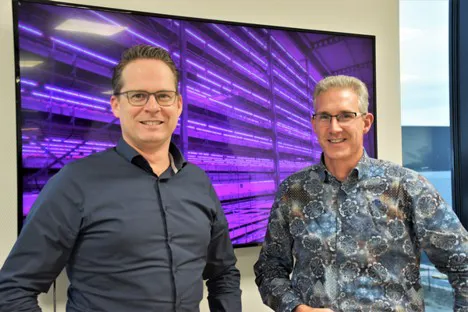It is possible to achieve a very high production per square meter in greenhouses. After all, in a controlled environment, climatic conditions are easily adjusted. You could even say the better you can control those conditions, the better the cultivation and production. This explains the success of vertical farming, as Jacob Boxhoorn and Edwin Snabel with Bosman Van Zaal state in the blog post below.

In recent years, there has been a lot of talk about vertical farming (or indoor farming/CEA). Discussions are often about revenue models. 'A tomato from a vertical farm is more expensive than a tomato from a greenhouse, so vertical farming will never work,' skeptics say.
But new techniques make new business models possible, which certainly applies to vertical farming. An example of this is the cultivation of crops with medicinal ingredients. Large pharma companies are very interested in this, as those companies require constant, guaranteed quality, which is possible with vertical farming.
However, that is just one example. Bosman Van Zaal has realized many vertical farming projects in recent years, from big to small, and in many different parts of the world. In some of these projects, the grower aimed to maximize production, while others wanted to have complete control over their crop. And then there are hybrid forms, as are used by several companies growing head lettuce.
But what all of these farms have in common is that cultivation takes place in a controlled environment. Other than that, there are mainly differences, for instance, regarding the earnings model and the use of energy and water. Delving a little deeper into those differences suddenly reveal many opportunities for vertical farming, also for Dutch companies.
"We at Bosman Van Zaal offer insight, create movement and promote growth. We believe that this is only possible by sharing knowledge. That is why we have written a series of white papers on vertical farming." The first white paper is about the differences between the various forms of vertical farming. Instructive, especially for anyone who is skeptical. The white papers are available to download on the Bosman Van Zaal website.
For more information: Bosman Van Zaal
Bosman Van Zaal
+31 297 344 344
sales@bosmanvanzaal.com
www.bosmanvanzaal.com/solutions/vertical-farming
